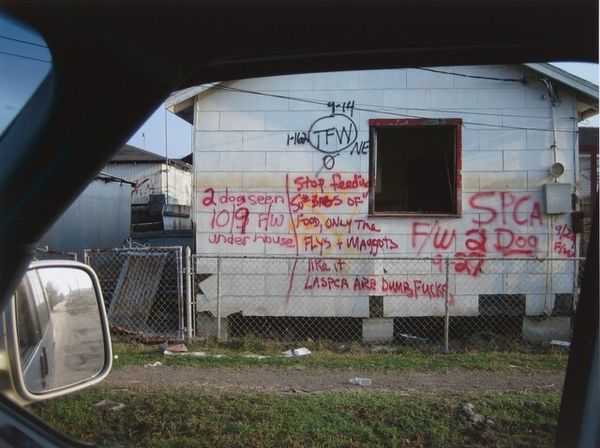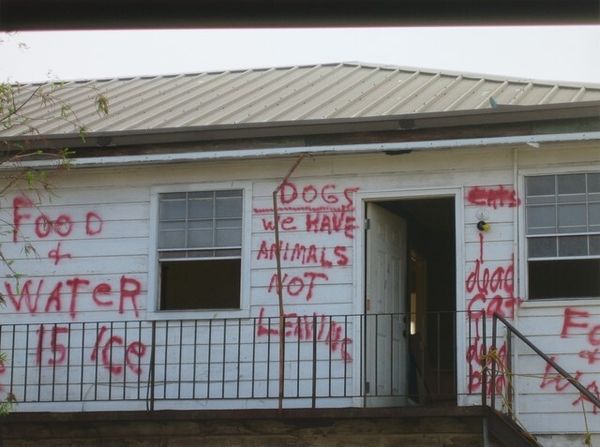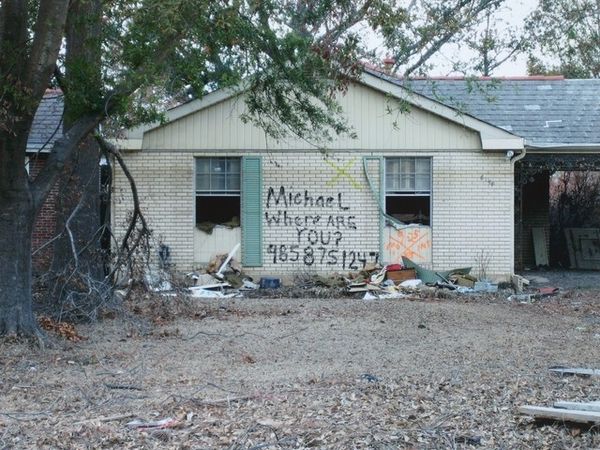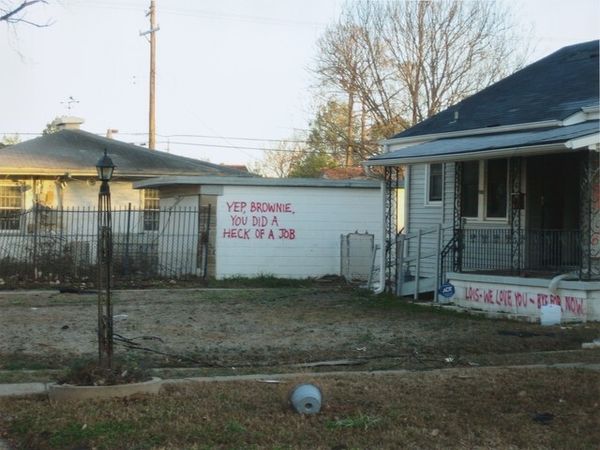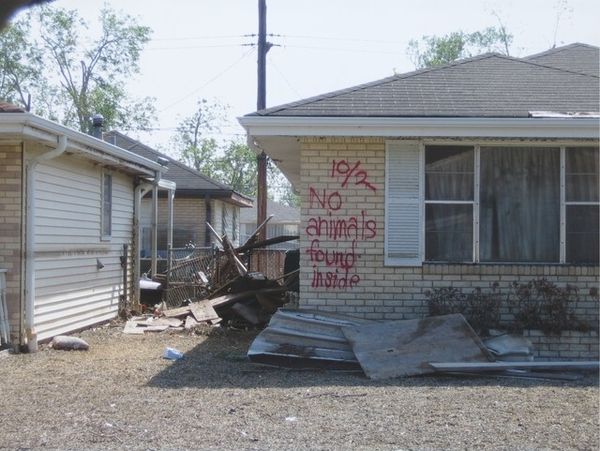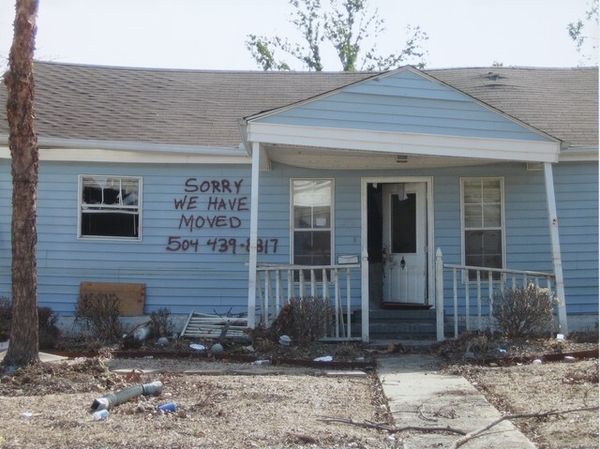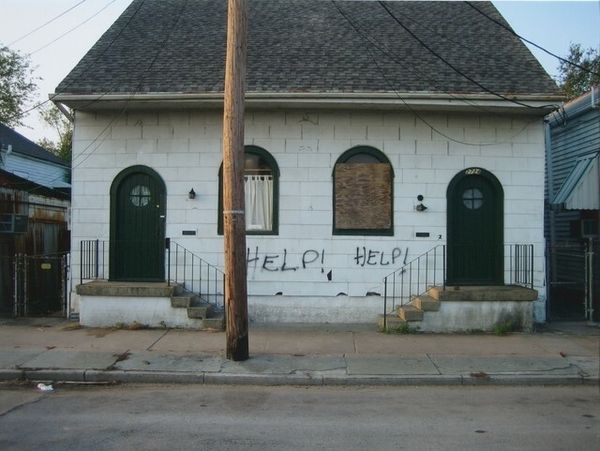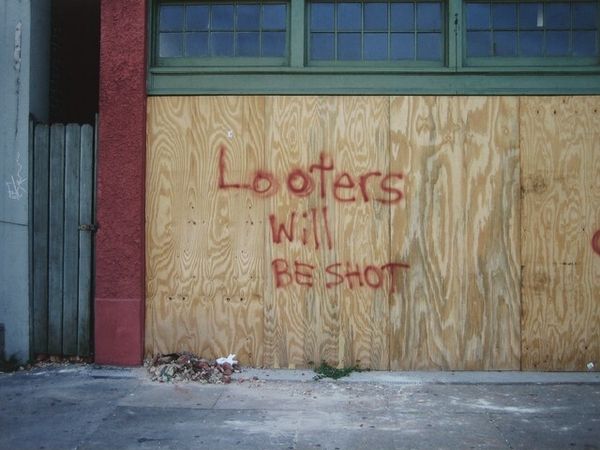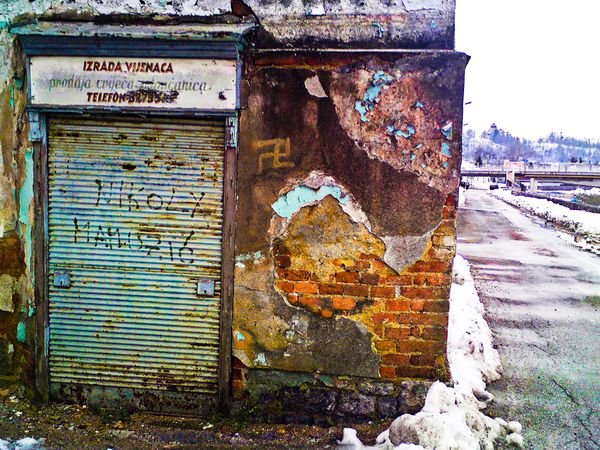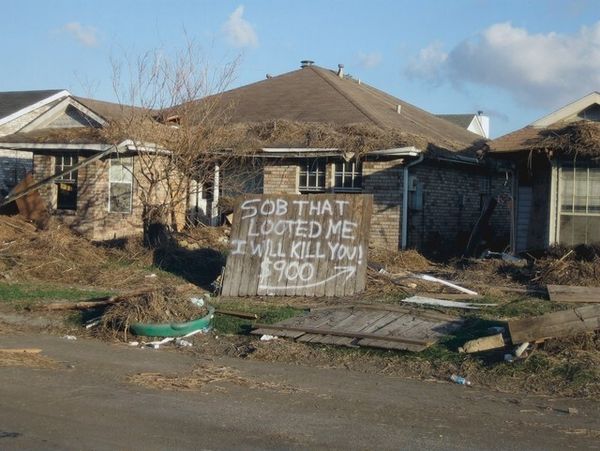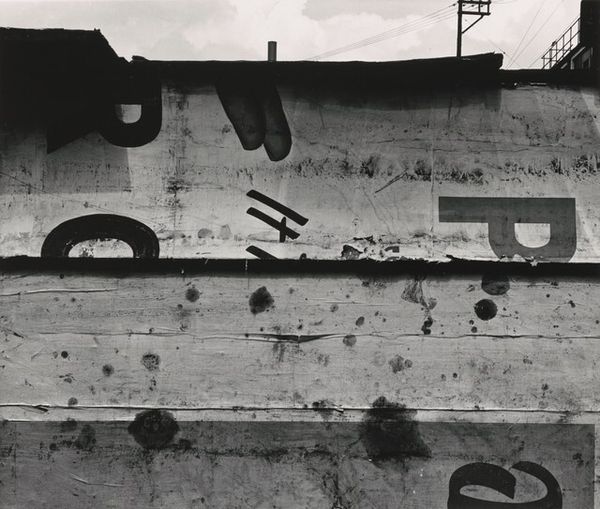![Untitled [New Orleans and the Gulf Coast, 2005] by Richard Misrach](/_next/image?url=https%3A%2F%2Fd2w8kbdekdi1gv.cloudfront.net%2FeyJidWNrZXQiOiAiYXJ0ZXJhLWltYWdlcy1idWNrZXQiLCAia2V5IjogImFydHdvcmtzLzgzZTY1OTlhLWJlYjItNDRkMy04ZDk5LWNjMjYxZWY4NGIxZi84M2U2NTk5YS1iZWIyLTQ0ZDMtOGQ5OS1jYzI2MWVmODRiMWZfZnVsbC5qcGciLCAiZWRpdHMiOiB7InJlc2l6ZSI6IHsid2lkdGgiOiAxOTIwLCAiaGVpZ2h0IjogMTkyMCwgImZpdCI6ICJpbnNpZGUifX19&w=1920&q=75)
Untitled [New Orleans and the Gulf Coast, 2005] Possibly 2005 - 2010
0:00
0:00
Dimensions: image: 27.62 x 36.83 cm (10 7/8 x 14 1/2 in.) sheet: 28.89 x 38.1 cm (11 3/8 x 15 in.)
Copyright: National Gallery of Art: CC0 1.0
Editor: So, this photograph, part of Richard Misrach’s series “Untitled [New Orleans and the Gulf Coast, 2005]", taken sometime between 2005 and 2010, is striking. The image captures what appears to be a hurricane-ravaged building tagged with graffiti; the phrase "12 pets slo[ughtered] to die in crates" really sticks out. It feels intensely critical. What do you see in this piece? Curator: This photograph resonates deeply with socio-political context. Consider the immediate aftermath of Hurricane Katrina. Beyond the devastation, there were glaring failures in government response and societal support. Misrach’s photograph acts as a stark document of that time. The graffiti transforms the building into a public canvas, a voice for the voiceless. Editor: A voice for the voiceless… So, the graffiti is not just vandalism? Curator: Exactly. It's an act of defiance, a raw expression of pain and anger at institutional failings. Who do you think the target audience for these messages are? What’s the message, do you think? Editor: Well, the size of the writing suggests a broad audience. Perhaps meant to shame local authorities. The scale feels almost desperate. It reveals the collective trauma of Katrina, extending beyond human suffering to the plight of animals abandoned during the storm. Curator: Precisely. The political power of imagery is on full display. Misrach, by photographing this, elevates this ephemeral act of protest to the level of historical record. It's no longer just graffiti, it's evidence. What did you think about Misrach capturing graffiti rather than the actual hurricane? Editor: Interesting! I think by highlighting these acts of expression rather than the literal ruin, Misrach makes the emotional consequences more vivid. This conversation changed how I look at the role of photography as a historical and political record. Curator: And I’ve been reminded that the most compelling art often arises from society's most challenging moments.
Comments
No comments
Be the first to comment and join the conversation on the ultimate creative platform.
